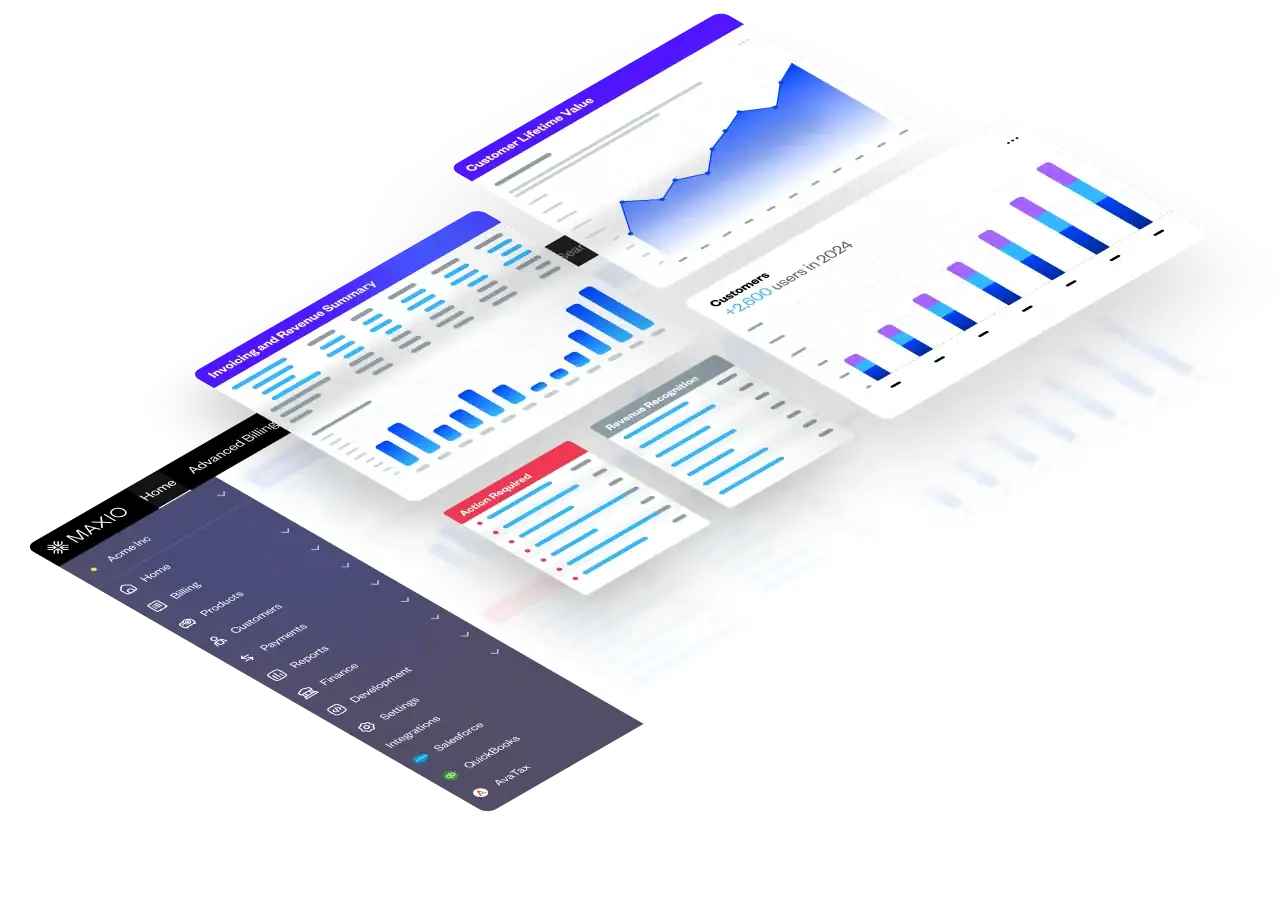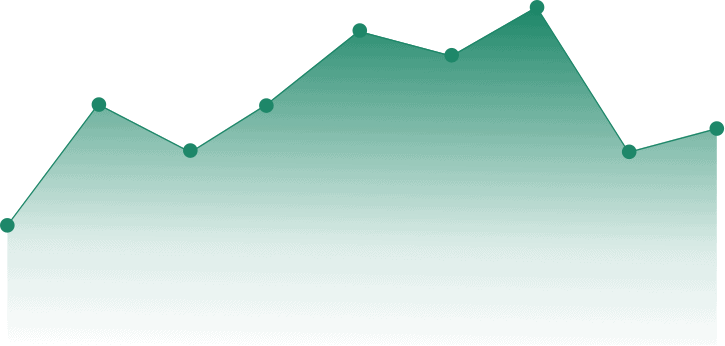Revenue Projections
What are Revenue Projections?
Revenue projections are the estimated amounts of revenue your company will earn over a period of time. Businesses can leverage the insights they glean from revenue projections to manage future financial performance.
How to use revenue projections in SaaS
Accurate forecasting (accomplished with a forecasting process we’ll discuss later) helps your company understand and prepare for what’s coming. It also helps drive agile, more informed decision-making that maximizes your company’s stability and growth.
Revenue projections are used by SaaS businesses to:
- Predict your cash flow. Will your company have the money it needs to invest in new initiatives?
- Decide on sales team quotas. How much new business is required to hit the company’s revenue goals?
- Drive marketing strategies to increase the sales pipeline and decrease churn. What type of promotions, new products, and customer loyalty initiatives should your company put in motion?
- Formulate a better-performing business plan. How can you tweak your long-term strategy to strengthen your company’s foundation?
- Scale your business. How can you continue with your growth trajectory?
Accurate revenue projections set your company up to build expectations for sales reps, properly allocate resources, maintain competitiveness, weather unforeseen obstacles, and reach your revenue goals.
Requirements for revenue projections in SaaS and subscription businesses
To generate revenue projections or a revenue forecast, you must incorporate:
- Revenue from existing customers
- Revenue from renewals
Revenue from new customers
Common revenue projection models
If you don’t project revenue accurately, the results could drive you to make decisions that won’t advance your business. Using a data-driven approach will prevent this problem.
You can forecast revenue many ways (each based on a different set of data). Let’s look at 4 of the most popular models companies use to arrive at an accurate projection.
- Historical forecasting. It’s a common (and valid) assumption that one of the best predictors of the future is the past. By taking historical data and applying an assumed growth rate, your company can predict future revenue. Keep in mind, however, that significant market changes can cause this method’s accuracy to suffer.
- Length of sales cycle forecasting. This method is effective for companies that have fleshed out their sales cycle and know how long it takes a customer to purchase. Length of sales cycle forecasting gives your company insight into how much “breathing room” you’ll have to get your project or service ready before the customer wants to buy it.
- Test market analysis. This is a great method to use for startups and companies adding new products or services. Instead of rolling a product out to your entire target market (and risk eating the costs of a full-scale push), you would test it on a small scale and measure the results. This way, you’ll know if a full launch will be beneficial to your business.
- Multivariable analysis. As the name suggests, this revenue prediction model factors multiple pieces of data into the mix. It looks at things like your marketing campaigns, the seasonality of your product or service, inflation, the interest rate, and the overall expected supply and demand.
Each of these models depend on robust data to work. Keep reading to improve the accuracy of your revenue projections.
How to project revenue growth
To generate accurate revenue projections, you simply need to take the difference between your company’s projected income and projected expenses. Here’s the formula:
Projected revenue = Projected income – Projected expenses
Once you’ve arrived at your projected revenue, you need to be able to translate that into the information you need to make good decisions and plot your strategies. Here’s how you do that.
1. Estimate projected income
Figuring out a baseline of how much of a product or service your company will sell during a specific block of time is essential for calculating your projected income. You’ll need to lean into your knowledge of your company and your insight into your industry and the market.
To estimate projected income for a subscription-based business, you’ll need to know sales data on which subscription sells the best. You’ll also need to know which months in the fiscal year are the busiest.
If you sold 10,000 subscriptions last year at an average of $60 per subscription (per year), you made $600,000. If you’re expecting a 20% increase in business, your estimated projected income is $720,000.
2. Estimate projected expenses
Your company’s income is a crucial metric, but it doesn’t tell the whole story. Now you need to determine how much your company spends on the products or services you sell.
How much does each subscription cost in technology and labor? Multiply that amount by the number of subscriptions sold. Add in other expenses, like employee salary, costs associated with your office building, and anything else involved in keeping your software updated and bug-free.
Using the numbers in the example above, your company is projected to sell 12,000 subscriptions at $60 a pop. The material and labor costs and other expenses add up to $19 per subscription. $19 X 12,000 subscriptions equal $228,000 in projected expenses.
3. Use the projected revenue formula
This is where your forecast revenue comes together—simply subtract your expenses from your income.
In our above example, where the projected income is $720,000 and the projected expenses are $228,000, the projected revenue estimate comes out to $492,000.
$720,000 – $228,000 = $492,000
The complete guide to SaaS revenue modeling
It’s difficult to build a SaaS revenue model that accurately reflects your future cash position. In this guide, we’ll show you exactly how to collect, measure, and use these metrics to build a long-lasting revenue model that will grow with your business over time.
What you’ll learn
- Two methods for forecasting ARR
- How to model cash flow associated with revenue
- How to build an ARR momentum table
Types of revenue projections
Most companies have more than one revenue stream and need multiple ways to predict how each of them will perform. Let’s review some of the data you can use in revenue forecasting.Most companies have more than one revenue stream and need multiple ways to predict how each of them will perform. Let’s review some of the data you can use in revenue forecasting.
SaaS revenue from existing contracts
Each existing contract will have a revenue schedule, which typically runs through the end of the present term, but there are plenty of exceptions. This schedule includes fees for subscription services and other items accountants determine must be recognized over time. In addition to the scheduled revenues, you need to include any variable, transaction, or usage fees. Typically, these are calculated, recognized, and often billed in arrears.
Revenue from renewal contracts
To generate accurate revenue projections, you must also project renewals.
These projections are typically created using a simple renewal rate or churn number. A more sophisticated approach is to use different renewal rates for different segments. The most accurate approach, if your business supports it, is to project individual contracts. This is only possible if you have either a limited number of contracts and sufficient customer interaction to gauge customer health, or you have an algorithmic-based approach based on actual usage information pulled from your application.
Revenue from new contracts
Projections using revenues brought in from new sales can include a contract’s value during the period, one-time charges like set-up fees, and subscriptions.
You can lay the groundwork for this projection by pulling sales pipeline data from your CRM). This information will show you how much new business is percolating in your sales funnel. You can combine this number with other metrics like last year’s new contract revenue and forecasted growth rate to create a revenue schedule.
Projecting revenue offers insight that companies can use to manage products, plan strategies, and protect against unfriendly market trends. They can run their businesses more confidently and make decisions with greater clarity.
Savvy leaders use every metric and tool at their disposal to ensure they maximize their revenue and grow their businesses. Tools like Maxio that can help you proactively project your future revenues and manage your recurring subscriptions to keep your company competitive.
Learn more about Maxio’s advanced revenue management features today.
The complete guide to SaaS revenue modeling
It’s difficult to build a SaaS revenue model that accurately reflects your future cash position. In this guide, we’ll show you exactly how to collect, measure, and use these metrics to build a long-lasting revenue model that will grow with your business over time.
What you’ll learn
- Two methods for forecasting ARR
- How to model cash flow associated with revenue
- How to build an ARR momentum table

